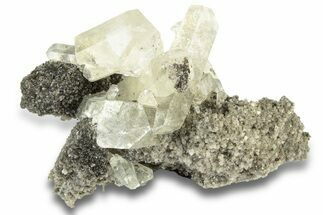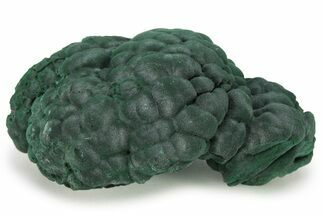This Specimen has been sold.
2.5" Biotite, Diopside & Calcite Association - Afghanistan
This is a 2.5" wide association of yellow-green diopside crystals, biotite and calcite. This mineral association was collected from Khogyani, Afghanistan and is in great condition.
Diopside is a pyroxene mineral with the chemical formula MgCaSi₂O₆. It is often found as small green crystals within metamorphic and igneous rocks, though it can vary in color including yellow, brown, and black. It is an important indicator rock when searching for deep-source volcanic pipes that may or may not contain diamonds. Geologists searching for these pipes often look for diopside crystal fragments, since they form in nearly the same atmospheric conditions and locations as diamonds. Diopside with deep green coloration is known as chrome diopside.
About Calcite Crystals
Calcite crystals are a form of calcium carbonate (CaCO₃) known for their diverse shapes, transparency, and vibrant range of colors. They typically form in rhombohedral, scalenohedral, or prismatic shapes, often with well-defined, sharp edges and glossy surfaces. Calcite crystals are often translucent or transparent, sometimes displaying a double refraction effect where objects viewed through the crystal appear doubled. They can appear in various colors—white, clear, yellow, pink, blue, green, and orange—depending on impurities or trace minerals.
A notable characteristic of calcite is its reaction with weak acids like vinegar, which causes it to effervesce, or fizz, as it releases carbon dioxide. This property makes calcite crystals a key tool in geological identification and studies. Calcite forms in many environments, from sedimentary rocks like limestone and marble to hydrothermal veins.
Calcite crystals are a form of calcium carbonate (CaCO₃) known for their diverse shapes, transparency, and vibrant range of colors. They typically form in rhombohedral, scalenohedral, or prismatic shapes, often with well-defined, sharp edges and glossy surfaces. Calcite crystals are often translucent or transparent, sometimes displaying a double refraction effect where objects viewed through the crystal appear doubled. They can appear in various colors—white, clear, yellow, pink, blue, green, and orange—depending on impurities or trace minerals.
A notable characteristic of calcite is its reaction with weak acids like vinegar, which causes it to effervesce, or fizz, as it releases carbon dioxide. This property makes calcite crystals a key tool in geological identification and studies. Calcite forms in many environments, from sedimentary rocks like limestone and marble to hydrothermal veins.
SPECIES
Biotite, Diopside & Calcite
LOCATION
Khogyani, Afghanistan
SIZE
2.5 x 1.2"
CATEGORY
ITEM
#122661
 Reviews
Reviews












